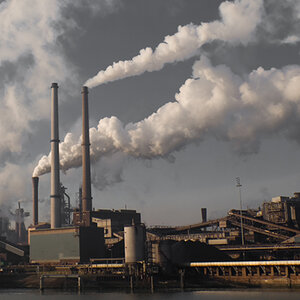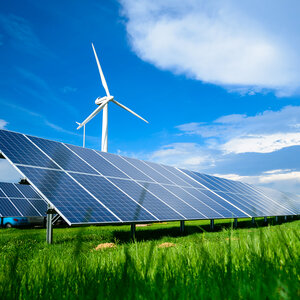In 2022, U.S. GHG emissions slowed but continued to rise, study finds

Greenhouse gas (GHG) emissions in the United States increased by 1.3 percent in 2022 against GDP growth of 1.9 percent, falling further behind in meeting the Paris Agreement 2030 climate goals, a study from Rhodium Group finds.
The report, Preliminary US Greenhouse Gas Emissions Estimates for 2022, which tracks GHG emissions relative to economic growth, found that the disruptions caused by the COVID-19 pandemic continue to affect both economic growth and GHG emissions and are being further exacerbated by ongoing global supply chain disruptions, a spike in fossil fuels prices, and Russia’s invasion of Ukraine. In 2019, the last year before the pandemic, the U.S. saw GDP growth of 2.3 percent, while net emissions declined 1.3 percent compared to 2018. In 2020, the pandemic recession caused a 2.8 percent decline in GDP, with a 10.6 percent drop in emissions. However, in 2021—with COVID restrictions lifted—the economy rebounded, growing 5.9 percent, while emissions rose 6.5 percent.
In 2022, the share of electric power generated from coal fell from 23 percent to 20 percent of the total, while power generated from relatively cleaner natural gas rose from 37 percent to 39 percent, largely due to the ability of natural gas to meet record demand caused by extreme heat and cold cycles across the U.S. in the past year. One bright spot in the report was that renewable energy generation (from wind, water, and solar) saw a significant increase, rising by 12 percent over 2021. According to the report, for the first time in more than 60 years, renewable energy sources surpassed coal in the U.S., generating 22 percent of total electric power.
According to the report, with GHG emissions increasing in 2022, the U.S. continues to fall behind in its efforts to meet the targets set under the 2015 Paris Agreement for reducing emissions levels by 2030 to 50 percent of levels recorded in 2005. In 2022, U.S. emissions measured only 15.5 percent below the 2005 benchmark, well short of the interim 2025 goal of 26 percent. The enactment of the climate-focused Inflation Reduction Act in 2022, along with robust state-level policies, most notably in California, indicates that accelerated progress will require aggressive adaptation to put the U.S. back on track to meet GHG emission goals.
(Photo credit: Getty Images/rmitsch)








